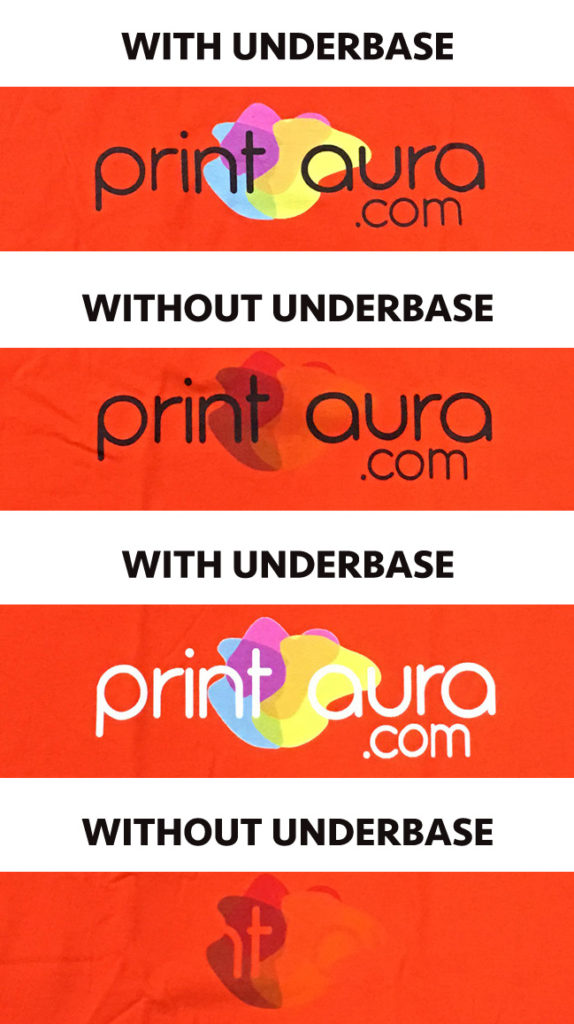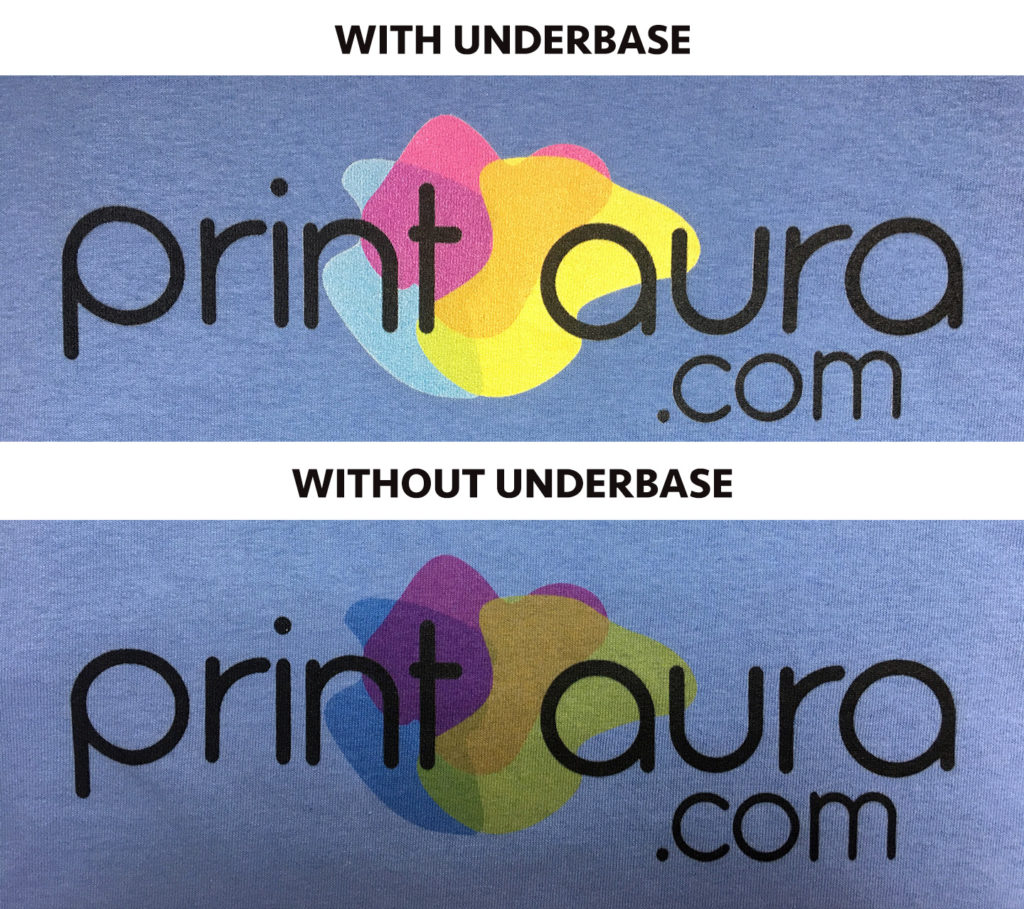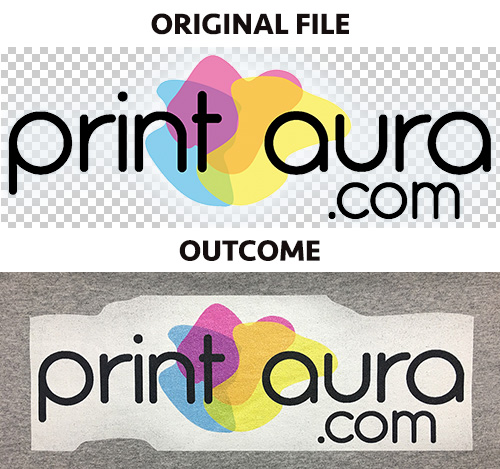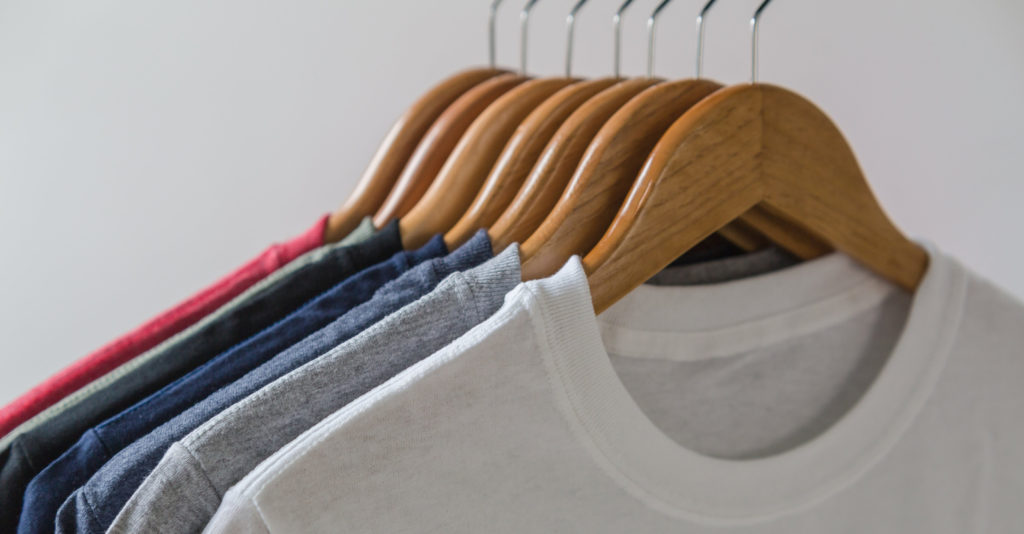Common Mistakes: Understanding Underbase

Understanding Underbase
Underbase has come up as being a commonly misunderstood concept. We try our best to lay out different concepts and techniques as clearly as possible, but sometimes you really just need to see something before you can understand it. We get a lot of questions about underbase so we thought it was time to create an informative and illustrative article on the subject!
What Is Underbase?
Underbase is a layer of white ink that is printed onto the garment before your design is printed. If you think of your garment as an art canvas, underbase makes a lot of sense. Generally speaking, most artists begin with a blank white canvas. This allows the color of their paint or ink to show up on the canvas as they are meant to be. Imagine you are creating an ink design. You have blue ink, because you want to make a blue iris flower. If your canvas is red, there is no chance the blue ink will translate as blue on top of the red. It would come out muddied and dark, closer to a deep brown. If you used that same ink on a white canvas, you are able to achieve your true blue.
The same goes for printing shirts. Blue ink will not show well on a red shirt. That is why we use underbase. The white underbase layer acts a blank canvas for your design. Without this blank canvas, ink can mix in with the color of the garment.
When Do I Need Underbase?
Underbase is needed any time you are printing light ink on a dark colored garment. Again, think of your garment as a canvas. It is nearly impossible to get a light color of ink to show up on top of a dark background. The white underbase cancels out the color of the garment, so your design's true colors can shine through!
We also recommend using underbase any time color is printed on top of color. Anytime you put one color on top of another, they mix together and change. For this reason, we also strongly recommend that you use underbase to preserve the true colors of your design.
When Do I Not Need Underbase?
We do not print an underbase layer on white garments. In this instance, the canvas is already blank. If there is no color to the garment, the ink prints true to color. You can request underbase be printed on white garments, but it is not necessary.
If your design is all black, you can get away without an underbase on lighter colored garments. Black tends to print decently on any color of garment, assuming that it is light or bright enough of a color for black to show up on.
Examples
Check out these examples of what white, black, and color will look like with and without underbase on a darker colored garment.

Other Considerations
Aesthetic
Sometimes people enjoy the vintage look of not using underbase. If you choose to forgo and underbase for a lighter garment, the print will turn out a bit duller, and slightly take on the hue of the garment's original color. In some situations, this aestheric is actually preferred. It just depends on what you are going for. However, it is very important to note that this is only successful using very light colored garments.
Example
Here is an example of the effect you can get without an underbase on a lighter colored garment. It produces a muted vintage effect.

Transparency
Underbase can cause problems for designs with standard transparency. The underbase itself is only printed in the area of your design. It does not have a transparent quality. In other words, even if part of your design is set 50% transparency, the white underbase will still print at 100% opacity under it.
Example
This is how a white transparent glow shows up when printed on a garment.

How do you avoid issues?
There are two ways to avoid transparency issues:
1 - Only print your design on only white garments. This solves the issue because there is no underbase printed on white garments, unless otherwise requested.
2 - You can also add a background to your print. Adding a background solves the issue because the white underbase is printed under the background, and the transparency is printed onto the background. The background can be any color, or combination of colors.
Example
This member was having issues getting the transparency of their design to print as they had imagined. But they were able to achieve the effect they desired, by adding a new background element to the design, even on a black shirt!
Check out the final adjusted product:

White Ink
Anytime no underbase is selected, no white ink will print at all. The underbase serves as the white ink, so if you ever decide to go without underbase, make sure there is no white in your design!
Questions?
If things still aren't clear, or if there are questions that have gone unanswered, let us know! Post in the comments down below if you need clarification. We truly want to help our members have the best grasp of printing techniques because it produces better results for you and your customers!
